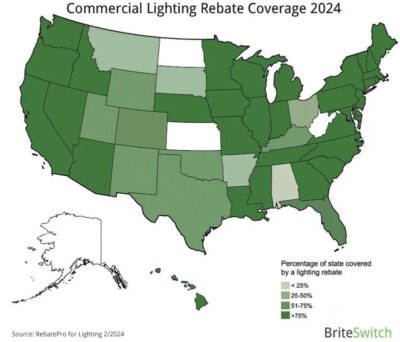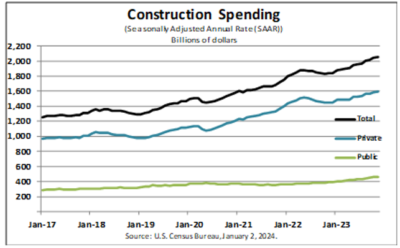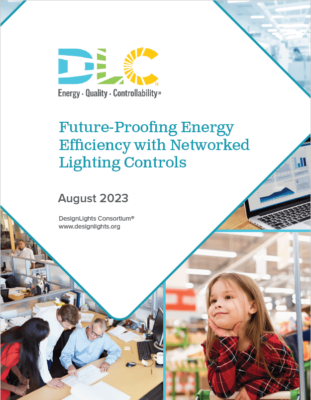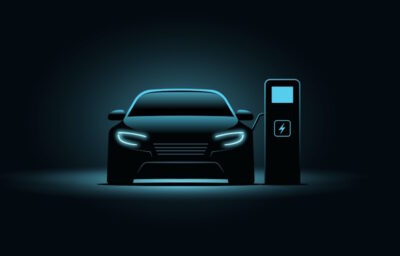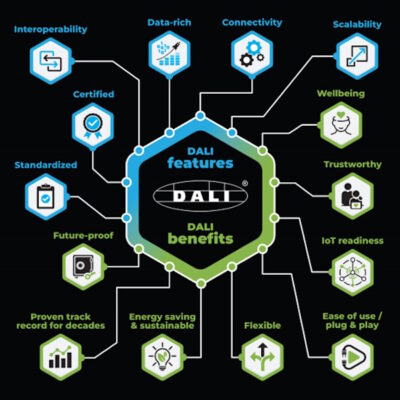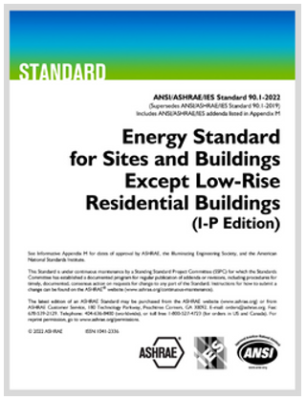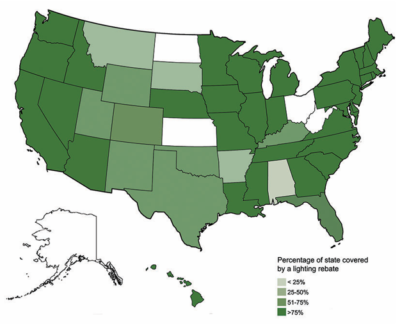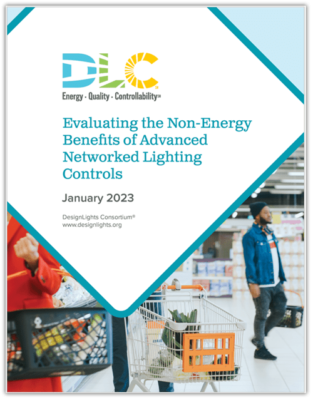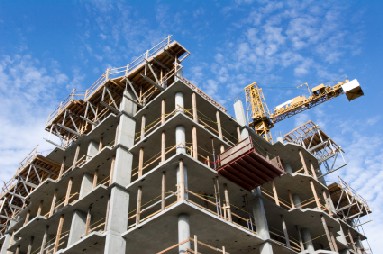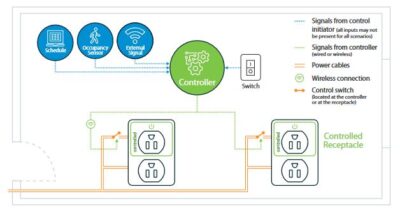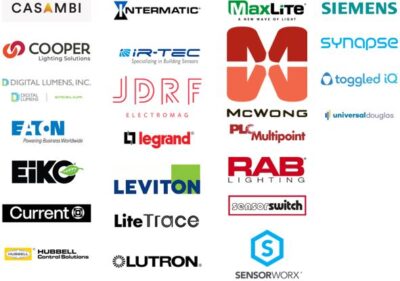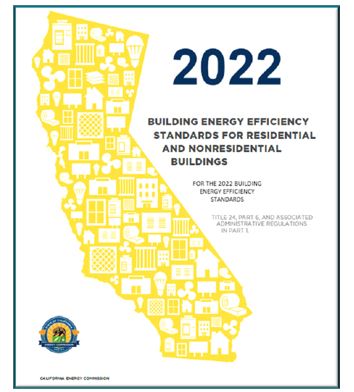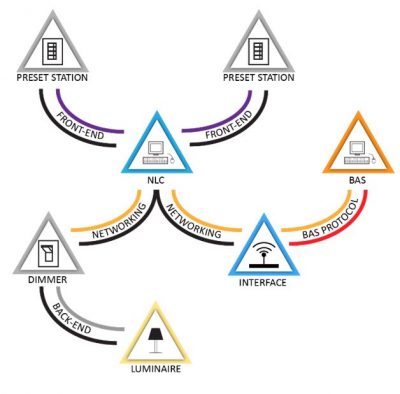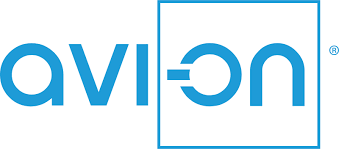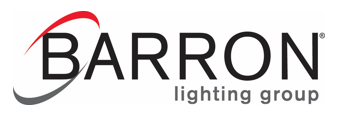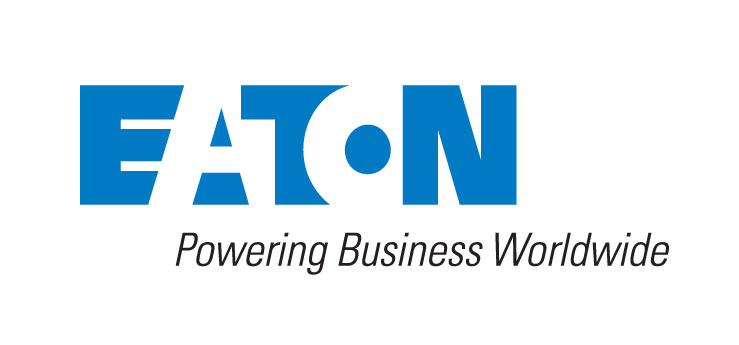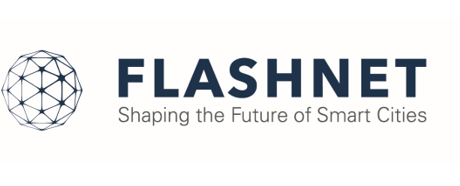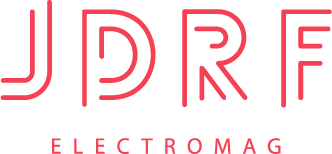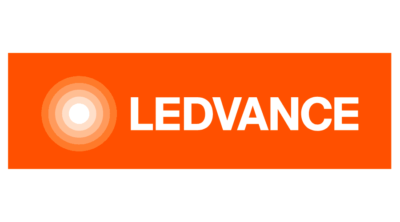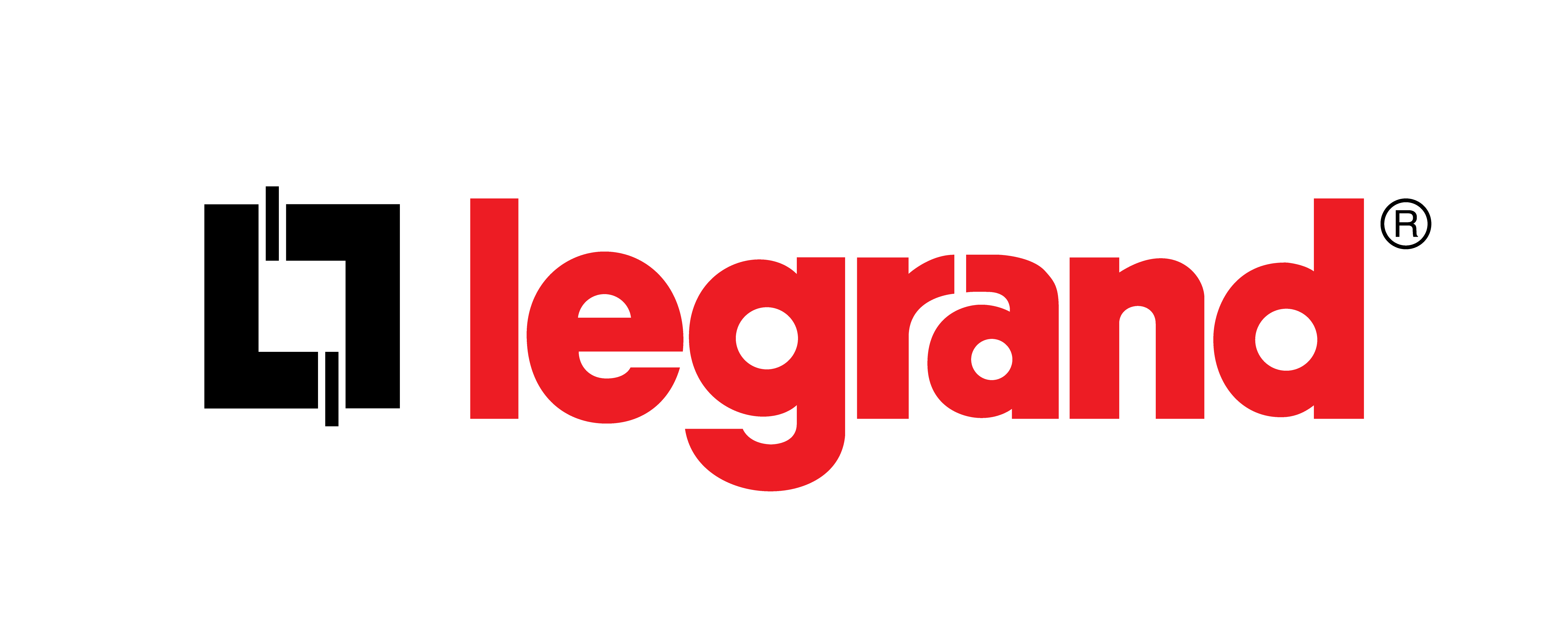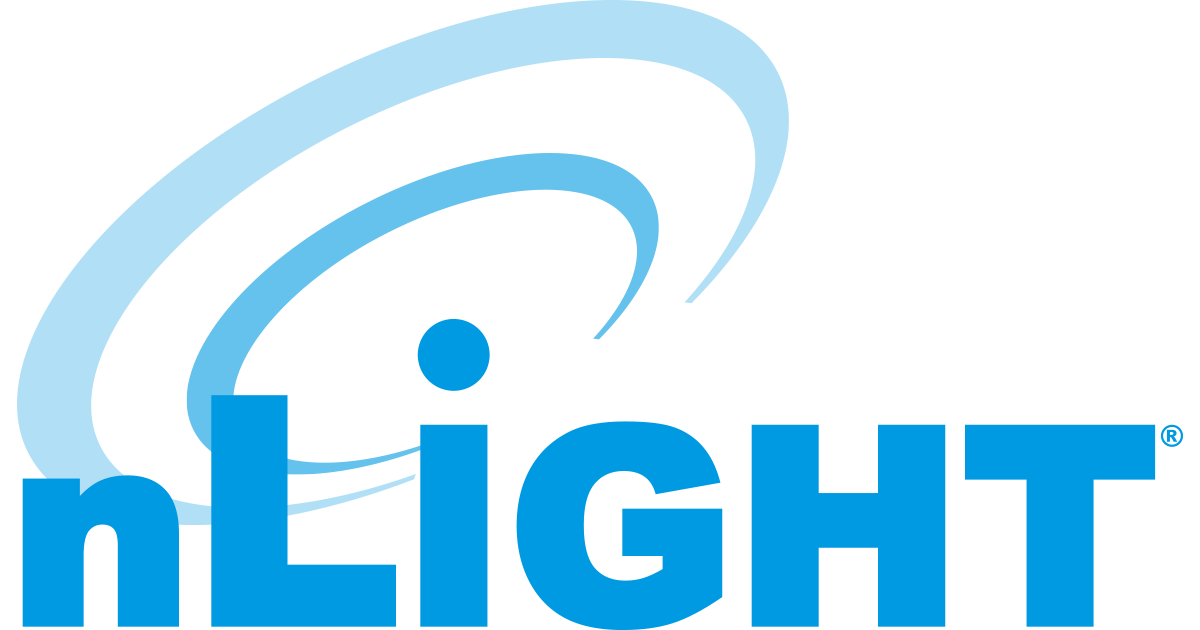In 2024, commercial lighting rebates remain a strong incentive for adoption of energy-efficient lighting and controls in existing buildings. Notable trends in prescriptive rebates include continuing widespread availability, softening demand for rebate dollars, more bonus programs, generally increasing average rebate amounts, and strengthening of networked lighting control rebates.
In this four-part series, Charles Knuffke, Systems VP & Evangelist, Wattstopper/Legrand, North and Central America and past chair of the Lighting Controls Association provides a crash Lighting Controls 101 class for lighting practitioners.
In this four-part series, Charles Knuffke, Systems VP & Evangelist, Wattstopper/Legrand, North and Central America and past chair of the Lighting Controls Association provides a crash Lighting Controls 101 class for lighting practitioners.
In this four-part series, Charles Knuffke, Systems VP & Evangelist, Wattstopper/Legrand, North and Central America and past chair of the Lighting Controls Association provides a crash Lighting Controls 101 class for lighting practitioners.
In this four-part series, Charles Knuffke, Systems VP & Evangelist, Wattstopper/Legrand, North and Central America and past chair of the Lighting Controls Association provides a crash Lighting Controls 101 class for lighting practitioners.
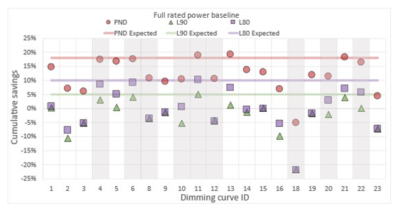
Cumulative energy and cost savings delivered by dimming curves from all luminaires characterized in this study, for one PND strategy (red) and two CLO strategies—L90 at 20 years (green), L80 at 16 years (violet)—relative to the full rated power baseline. The gray shaded columns represent ANSI C137.1-2022 noncompliant products. Notably, L-3, L-9, and L-23 are three units of the same make/model streetlight.
To improve understanding and possibly resolve the shortcomings of 0-10V products, the Department of Energy recently published the results of a study conducted by Pacific Northwest National Laboratory (PNNL). The study characterized 23 LED streetlights that claimed dimmability via a 0-10V interface, quantified the performance variation found in market-available LED drivers, and explored the potential impact of the most recent 0-10V voluntary standard, ANSI C137.1-2022.
The Lighting Controls Association is proud to announce the latest offerings in lighting controls from industry-leading manufacturers in this year’s annual product guide. Check them out!
“In the lighting controls industry, are we at an inflection point where vendors are starting to embrace the idea of cross-vendor interoperability?” asks Steve Mesh.
Construction spending is expected to grow in 2024 but at a significantly slower pace, according to the American Institute of Architects (AIA) Construction Consensus Forecast Panel made up of leading economic forecasters. The Panel forecasted that nonresidential construction spending will slow to 4% growth in 2024 and further slow to 1% growth in 2025.
In this guest post by Steve Mesh, he argues that while networked lighting control systems are getting far easier to set up and operate, they are still inherently complex, and that’s a good thing.
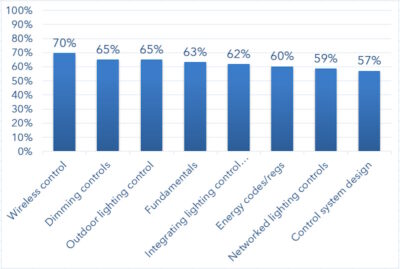
Please check all topics that are of particular interest to you and that you would like to see LCA cover more on its website and lightingCONTROL e-newsletter. (Check all that apply.) Shown here are the top eight.
In 2023, the Lighting Controls Association (LCA) welcomed 180,000 visitors who viewed 600,000 pages on our website and Education Express. In the fall, the LCA invited subscribers of lightingCONTROL, our monthly newsletter, to participate in a satisfaction survey. Respondents were highly satisfied with all major site features, with Education Express topping the list.
As first-generation LED lighting systems begin to be replaced, a significant opportunity to maximize energy savings by incorporating networked lighting controls is emerging, particularly when HVAC integration is included, according to a new report by the DesignLights Consortium.
Everywhere, we see signs the LED revolution has won. An argument can be made, however, that this mature lighting technology is simply entering its next phase of market opportunity. Call it LED Revolution 2.0.
Based on a new Lighting Controls Association Education Express course, this article takes a deep dive into the lighting control requirements in the 2021 version of the International Energy Conservation Code (IECC).
“Today, a fresh lighting design is really a lighting and controls design,” writes Acuity’s Steve Roe in this guest post. “Fortunately, leading manufacturers created a tool for lighting specifiers to do it all based on a simple formula: put the controls within the luminaire (light fixture).”
The 2016 Paris Agreement called for its nearly 200 signatories to join in limiting global warming to an increase of 1.5 degrees Celsius above pre-industrial levels. This would require carbon emissions to be reduced by about half by 2030 and reach net zero by 2050. To reach this goal, the rate of retrofits in the Global North will need to triple from barely 1 percent to at least 3 percent of stock each year, according to Retrofitting Buildings to be Future-Fit, a November 2022 report by commercial real estate services firm Jones Lang LaSalle (JLL).
Craig DiLouie, LC, CLCP recently interviewed Brendon Van Campen, Senior Sales Director, Lutron Electronics, for an article about lighting controls trending toward simplicity.
Check out these excellent publications covering lighting controls by the Illuminating Engineering Society.
The United States is currently enjoying a dramatic surge in construction in manufacturing infrastructure. This suggests fresh demand for lighting and controls and the expertise to properly apply them to industrial spaces.
Craig DiLouie, LC, CLCP recently had the opportunity to interview Stephen Zhou, Executive Vice President, McWong International, about how lighting controls are becoming simpler. Transcript follows.
Growing demand for plug-in electric vehicles is likely to coincide with the significant adoption of EV charging stations in commercial buildings. If true, the economics of lighting upgrades may change, putting all energy efficiency options on the table, including those previously limited by payback thresholds.
This guest post by the DALI Alliance discusses sustainability, future-proofing, and the opportunities offered by smart, data-rich lighting systems. It also looks at the role of established global standards such as the Digital Addressable Lighting Interface (DALI®).
Craig DiLouie, LC, CLCP recently had the opportunity to interview Zach Schroeck, Director, Product Management, Lutron Electronics Co., Inc. for an article about “things every electrical distributor should know about lighting controls.”
By Steve Mesh This article on emergency lighting and controls was very much a collaborative effort. Many experts in the field—including Rick Miller, Craig DiLouie, and several manufacturers—provided extremely valuable input in reviewing and fact-checking the content. Egress and emergency lighting are critical elements of building design. During periods of occupancy, a clear, unobstructed path [...]
The American Society of Heating, Refrigerating, and Air-Conditioning Engineers (ASHRAE) and the Illuminating Engineering Society (IES) recently published ANSI/ASHRAE/IES Standard 90.1-2022, Energy Efficiency Standard for Buildings Except Low-Rise Residential Buildings. For lighting, the new version adjusts power allowances, adjusts the definition of alterations, adds horticultural lighting, and updates several control requirements.
In 2023, commercial lighting rebates remain a strong driver for adoption of energy-efficient lighting and controls in existing buildings. Notable trends include continuing stability in LED and control rebates, imminent jeopardy for some LED replacement lamp rebates, and growth for networked lighting control and horticultural rebates. A coinciding trend with implications for lighting upgrades is introduction of substantial rebates for electric vehicle (EV) charging stations.
Industry journalist Craig DiLouie recently had the opportunity to interview Thomas Leonard, Vice President, Commercial Controls, and Jeff Beyert, Vice President, Channel Sales & Service, of Leviton for an article about lighting control fundamentals to be published in the July 2023 issue of tED Magazine, the official publication of the NAED. The main question is: What does is the minimum every electrical distributor needs to know to begin to understand the lighting controls category?
The DLC recently published a summary of research conducted by Skumatz Economic Research Associates, Inc. (SERA), which identified non-energy benefits (NEBs) of networked lighting controls and developed a methodology for quantifying them.
The Lighting Controls Association is proud to announce the latest offerings in lighting controls from industry-leading manufacturers. Check them out!
A major contributor to the economy is construction, which overall exhibited very strong growth in 2022. Despite a strong finish to the year, however, nonresidential construction spending is expected to moderate in 2023 and slow significantly in 2024, according to the American Institute of Architects (AIA) Construction Consensus Forecast Panel made up of leading economic forecasters. The Panel forecasted that nonresidential construction spending will moderate to grow a healthy 5.8% in 2023 but then slow to less than 1% in 2024.
“Maybe you are on a rushed project with barely enough time to finalize the drawings. Perhaps you’re being onboarded years after the project began. Maybe you just have a client who won’t respond to your requests for more information. No matter the reason, a project without an Owner Project Requirements (OPR) can present one of the most common and difficult challenges modern designers face today.”
The National Renewable Energy Laboratory has published a short guide to plug load control and why it should be a common feature of commercial building energy codes.
The Lighting Controls Association was founded as a council of NEMA back in 2001 to promote adoption of lighting controls through education. Today, the association continues to make a demonstrable difference in supporting public expertise in selecting, designing, installing, and operating lighting control systems. This article outlines the LCA’s accomplishments in 2022 and offers a preview of what’s to come in 2023.
Craig DiLouie, LC, CLCP recently had the opportunity to interview Chris Udall, Senior Project Manager, Lutron Electronics about how electrical distributors can position themselves to sell networked lighting controls.
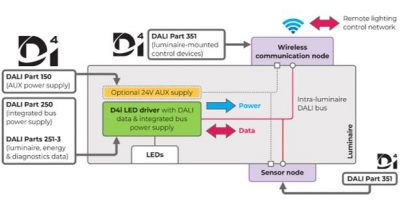
Diagram depicting D4i implementation in an outdoor luminaire with two nodes, one for sensing and the other for wireless communication. Image courtesy of DALI Alliance.
The DALI Alliance recently extended DALI-2, which standardizes interoperability and control of LED drivers and sensors, with a version that more finely addresses the needs of the Internet of Things, which calls for individual device addressability, connectivity, and two-way data exchange.
Craig DiLouie, LC, CLCP recently had the opportunity to interview Martin Mercier, Marketing Manager, IOT/Connected Systems, Cooper Lighting Solutions. The topic: how electrical distributors can position and sell networked lighting controls.
On January 1, 2023, the 2022 version of California’s energy code—Title 24, Part 6 of the Building Standards Code—takes effect, superseding the previous 2019 version. In terms of lighting controls, the numerous changes include various clarifications and tuning along with two major provisions requiring occupant-sensing in offices larger than 250 sq.ft. and demand-responsive lighting controls. Designers and specifiers need to understand these changes before they begin working on code-covered new construction and alteration projects that will go out for permit in California in 2023.

Short throw proximity sensors purposefully activate the scene, to free the light to ripple and move with the pedestrians and cyclists.
This month, we explore a lighting control solution installed as part of a light art installation in a vehicle underpass in Lonsdale Quay, North Vancouver, BC.
The new incarnation of the Commercial Buildings Tax Deduction offers a strong incentive to stretching energy efficiency in new buildings and modernizing existing buildings. In new buildings, it incentivizes more detailed design and the most advanced control options. In existing buildings, it incentivizes a wide range of lighting and advanced control options that, when coupled with available utility rebates, can substantially reduce initial cost that remains the largest inhibitor to investment in reducing operating costs via energy efficiency.
Here’s the scenario: you are a lighting controls designer working on a project with a BAS that uses BACnet…
NYControlled: Avi-On’s Joe McGrath Talks Lockdown Mode
10/24/2025At NYControlled, the EdisonReport’s Randy Reid interviewed Joe McGrath, Sales Director East Coast for Avi-On, about the company’s new feature called Lockdown Mode.
The Lighting Controls Podcast: Gary Meshberg and Harold Jepsen Talk New CIN/SOO Tool
09/12/2025In this episode of The Lighting Controls Podcast sponsored by MaxLite, hosts C. Webster Marsh and Ron Kuzmar interview Gary Meshberg, Chair of the Lighting Controls Academy, and Legrand’s Harold Jepsen, Vice Chair of the NEMA Lighting Controls Technical Section about the evolving world of lighting controls and a groundbreaking new Control Intent Narrative/Sequence of Operations Tool offered by the Lighting Controls Academy.
LCA TV: EmerLite™ by LiteTrace
09/08/2025This educational video, produced by the Lighting Controls Association at the 2025 LEDucation event in New York City, introduces LiteTrace’s EmerLite™, a wireless platform revolutionizing emergency lighting compliance for commercial facilities.
LCA TV: Athena Lighting Control System by Lutron Electronics
08/13/2025This educational video, produced by the Lighting Controls Association at the 2025 LEDucation event in New York City, introduces Lutron’s Athena lighting control system.
LCA TV: Wattstopper i3 Platform by Legrand
08/11/2025This educational video, produced by the Lighting Controls Association at the 2025 LEDucation event in New York City, introduces Legrand’s Wattstopper i3 Platform, a next-generation lighting and building intelligence solution powered by KODE Labs.
LCA TV: IR -TEC America’s Bluetooth Programming for Sensors
07/29/2025This educational video, produced by the Lighting Controls Association at the 2025 LEDucation event in New York City, introduces IR-TEC America’s Bluetooth programming capability for the company’s sensors.
LCA TV: Autonomy Lighting System by JDRF Electromag
07/23/2025In this educational video, produced by the Lighting Controls Association at the 2025 LEDucation event in New York City, Ray Dableh, CEO of JDRF Electromag, demonstrates the company’s Autonomy Lighting System, a self-configuring luminaire-level lighting control (LLLC) system.
LCA TV: NX Lighting Controls by Current
07/21/2025This educational video, produced by the Lighting Controls Association at the 2025 LEDucation event in New York City, introduces new products in Current’s NX Lighting Controls line–including NX Site Manager, an intuitive and easy-to-use GUI providing real-time programming and management.

